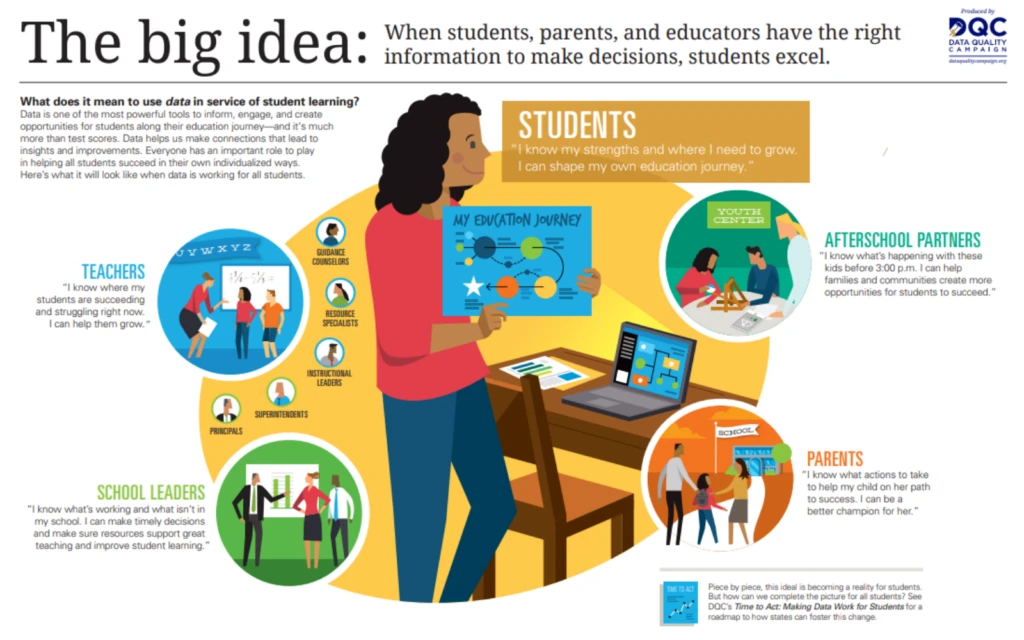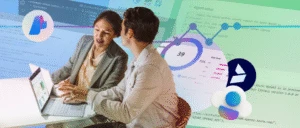
Addressing critical K-12 education challenges using data and AI
Serena Sacks-Mandel | General Manager, US Education Customer Success
K-12 educators devote their lives to ensuring every child has the opportunity to learn, grow, and achieve their best. However, their work has become more challenging in the past few years. Issues of equity and access, social-emotional learning, and educational achievement have been exacerbated by the COVID-19 pandemic. Students are coming to school with higher levels of trauma and anxiety. What’s more, the teaching workforce has gotten smaller, leaving fewer experienced professionals to meet students’ needs. Studies have shown significant learning loss and inequity resulting from the pandemic.
Graphic showing McKinsey data1
If unaddressed, learning loss, as documented in the graphic above, can reduce lifelong earnings potential for these students. To solve these challenges, today’s education leaders are using data and AI to personalize learning, free up time to focus on individual student needs, and expand educational equity.
Serving individual student needs at scale
K-12 educators are tasked with helping to strengthen the foundations of lifelong learning. Reading is a key example. The traditional approach to reading assessment—where individual students read aloud to teachers—is time-consuming, taxing, and imprecise. By the time evaluations are complete, the class may be well into the school year.
Using advanced speech recognition technology and AI, teachers can measure students’ reading progress quickly and easily. Assessments can happen in parallel whenever it is convenient. In addition to measuring reading progress, AI can help students build fluency through independent reading practice and give educators up-to-date insight into student progress.
Teachers can also use AI to assist with curriculum curation, whether for individual students learning at their own pace or an entire class. Schools usually have large libraries of learning objects such as videos, quizzes, and interactive experiences. Teachers face the task of choosing which materials to use based on their understanding of student progress. Using AI that recommends materials based on student achievement data, teachers can augment their experience and expertise and get back time to work with students.
These examples show how AI helps educators address individual student needs and gain more time to mentor and interact with students. It empowers them to apply their experience, empathy, and mentorship for maximum impact.
Understanding the needs of each student
Every educator does their best to get to know their students. However, class sizes for many teachers make it especially challenging to keep up with the full range of student progress and needs. Modern data analytics can help them scale while deepening their understanding of how their students are doing.
With tools such as Education Insights for Teams, educators have one place to get real-time analytics of participant progress and activity within a class team. At a glance, they can proactively track student progress, get the data they need to shape the student experience, and ensure they are meeting social and emotional as well as academic needs.
The goal is never to replace the expertise of skilled teachers. AI and analytics scale and augment that expertise, freeing teachers to apply their skills in the most effective ways.
Ensuring security, privacy, and access
Any time data is used in an education setting, security is a paramount concern. Microsoft Security Intelligence finds that education is by far the most-targeted sector, with 64 percent of devices reporting a malware encounter in the most recent 30-day period. Additionally, schools face stringent compliance requirements regarding security and privacy.
Choosing technology vendors that recognize and respond to this challenge is essential. Microsoft invests more than $1 billion annually in security and privacy research, which directly enables new security protections for education customers. The company has launched a national campaign to support community colleges in addressing the cybersecurity skills gap, helps schools comply with regulatory requirements, and recognizes privacy as a fundamental human right. This ethos is made real in its transparency around the collection and use of data.
Helping educators empower every student
Many resources are available to support schools in their missions to improve equity and access to technology. Through discount programs such as Shape the Future, Microsoft provides increased access to the latest software and hardware for students so they can have a better learning experience. K-12 educators can also take advantage of in-depth resources on digital transformation and remote learning, helping them bring the benefits of technology investments to all students.
I continue to be inspired by the ways our customers use technology to enable learning. Those seeing the greatest impact take a holistic and systematic approach to data, analytics, and digital transformation. For example, the Nebraska Department of Education (NDE) generates actionable insights with Microsoft Azure to support equitable outcomes for students. “We have to be more strategic in using data to inform best practices, policy approaches, and different types of interventions to help all kids gain access to a quality education,” says Dr. Dean Folkers, Chief Information Officer at the NDE [currently Director, Data and Technology, Council of Chief State School Officers (CCSSO)]. “We want to get systems and processes in place that help us make the most use of our hybrid environment moving forward. The collaborative tools—using Teams, our transition to OneDrive and SharePoint across the board—is all part of our implementation.”
Sometimes the most challenging times are also the most rewarding. Educators and technologists today have unprecedented opportunities to help students achieve more. I’m excited to see what the future brings.
Join us to learn more about data and security solutions for the education and government sectors at the US Public Sector Summit.
1 “COVID-19 and education: The lingering effects of unfinished learning,” McKinsey & Company, 2021.





